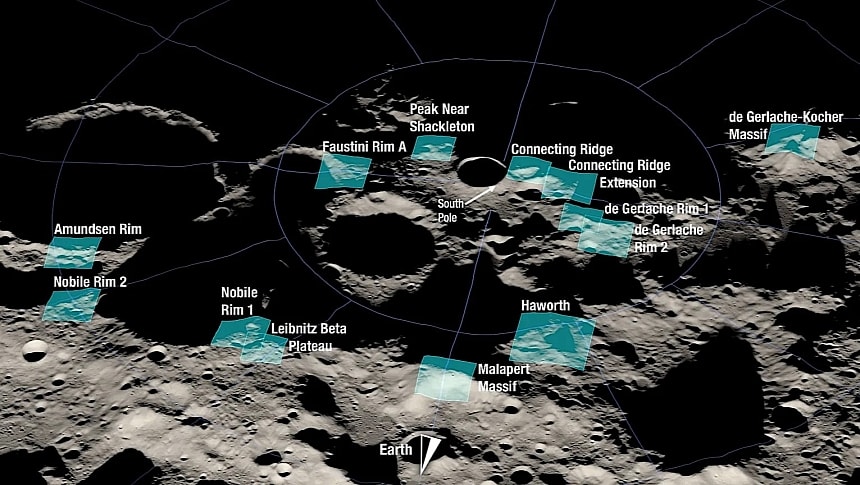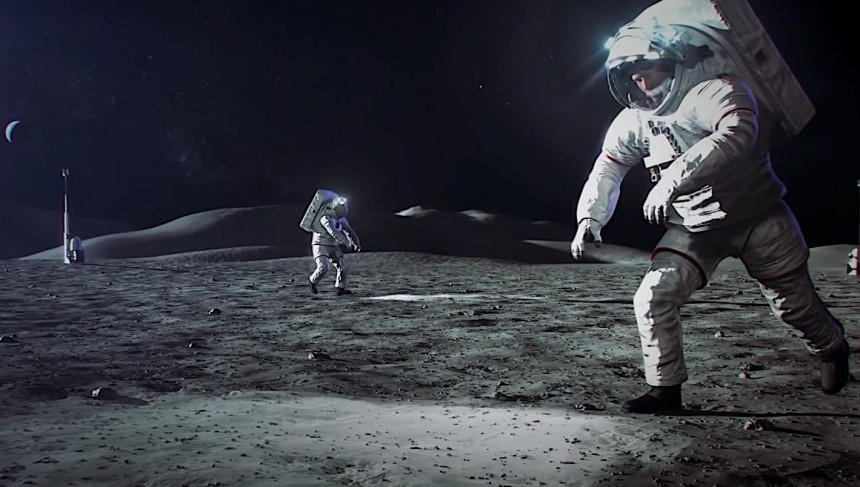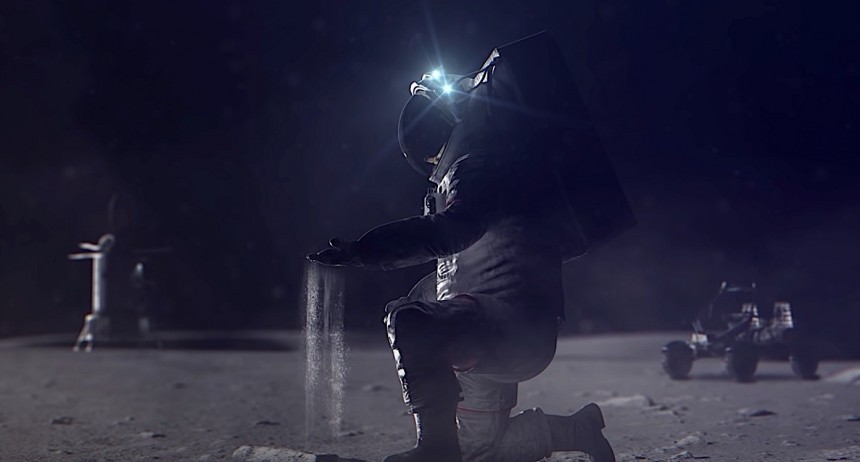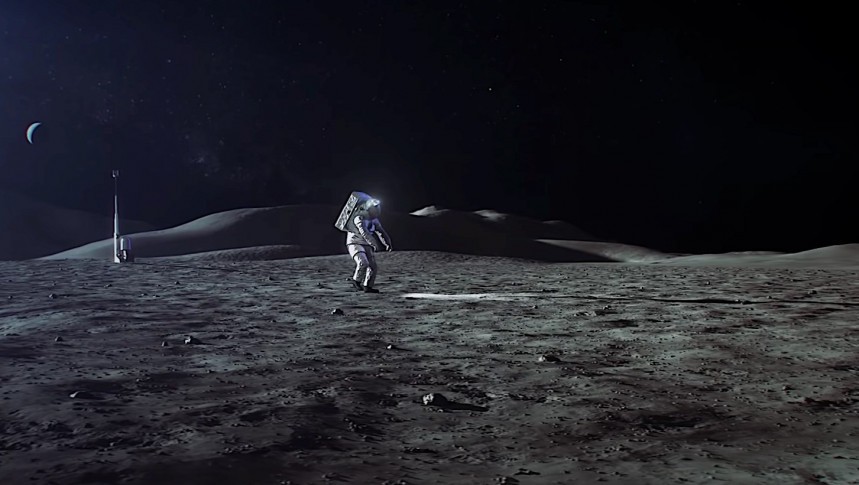At the beginning of this year NASA announced a one-year postponement for the Artemis II and III missions. The spaceflights were supposed to take a crew of astronauts around the Moon and another one to the surface in 2024 and 2025, but now that will happen in 2025 and 2026, respectively.
The reasons for the delay have to do with ensuring the safety of the people going up there, and resolving a number of undisclosed issues that most likely have to do with the hardware (rocket, spaceship, and lander) not being quite ready to perform their missions.
The profile of both missions hasn't changed, despite the delay. Artemis II will take a crew of four people, including the first person of color and the first woman, to the farthest point humans have ever traveled: 6,400 miles (10,300 km) beyond the Moon.
Artemis III will see another crew with roughly the same makeup land on the Moon. The landing will take place, for the first time ever, at the satellite's South Pole, a place rich in promises and mystery.
Back in 2022, the American Space Agency announced the candidate site for landing in the region. There are 13 of them, all located within six degrees of latitude of the lunar South Pole, and each of them has multiple potential landing sites for the mission.
We'll talk about them all here as we try to get a proper sense of them before Artemis III takes off two years from now. But first, some general considerations about the locations.
All 13 were selected after teams of people looked at the Moon as seen through the instruments of the Lunar Reconnaissance Orbiter, but also through scores of related publications and scientific findings.
A number of criteria were taken into account, and they ranged from the locations' ability to accommodate a safe landing to line-of-sight with Earth and the presence of sunlight. The science missions of Artemis III, which include moonwalks and sample collection, were also taken into account.
NASA chose the South Pole of the Moon for the new exploration program because of its potential for holding many resources that could benefit future missions up there, but also because it is one of the oldest lunar regions, thus a potential treasure chest of discoveries.
All of the potential landing sites that were ultimately selected have diverse geologic features, and they all have sites that are bathed in sunlight for the estimate duration of the Artemis III mission, 6.5 days. That was a requirement because sunlight is essential for the functioning of astronaut hardware, and can also minimize temperature variations.
That being said, below you’ll find the list of potential Artemis landing sites, and the most important things we know about them.
Faustini Rim A – that would be one of the rims of a lunar crater called Faustini, which has a diameter of 24 miles (39 km). Here sunlight falls on the ground at a very low angle, meaning the crater itself is in permanent shadow – in fact, no one has ever seen how the floor of the crater looks like. It's a location that may be rich in water vapor and hydrogen.
Peak near Shackleton crater – Shackleton is another Moon crater, smaller than Faustini (13 miles/21 km in diameter). Its rims are bathed in continuous sunlight, while its floor is always covered in a shroud of darkness. The place has the potential of harboring water ice and hydrogen.
de Gerlache crater rims – de Gerlache is an impact crater 20 miles in diameter (32 km), and it is virtually unexplored, despite one side of it being visible from Earth. Two of the crater's rims are being considered as potential landing site for Artemis III, together with another nearby feature, the de Gerlache-Kocher massif.
Haworth crater – at 31 miles (51 km) in diameter, the Haworth crater is one of the smallest of its kind being considered as a landing site. Because it is completely engulfed in darkness, it could be significantly colder than the other craters in the region.
Nobile crater rims – two of the rims surrounding the lunar Nobile crater are also considered for landing. This one is by far one of the largest crater in the region, with a diameter of 49 miles (79 km), and it's also the general area where the VIPER rover will land later this year.
Malapert Massif - a mountain on the Moon, the peak of the Malapert Massif rises 16,400 feet (5,000 meters) above its base, and is located right next to an impact crater wearing the same name.
Leibnitz Beta Plateau - despite its name, the Leibnitz Beta Plateau is technically a flat-top mountain that, at its highest, towers 20,000 feet (6,000 meters) above its surroundings.
Rim of Amundsen crater – perhaps the most famous of all lunar craters, Amundsen is a massive 64 miles (103 km in diameter). It is partially visible from Earth, and people suspect it harbors solid carbon dioxide.
Aside from the above craters, rims, and mountains, NASA is also considering to connecting ridges in the area (see main photo of this piece for details) as a potential landing site for Artemis III.
The 13 locations mentioned above are perennial candidates for NASA missions to the Moon. True, only will be selected for Artemis III, but the remaining ones will stay on the list and serve as touchdown zones for future missions.
The space agency has not yet decided where to put down the first crewed mission to the Moon. That's because the selection depends on a variety of factors, including the launch window and spacecraft trajectory.
The profile of both missions hasn't changed, despite the delay. Artemis II will take a crew of four people, including the first person of color and the first woman, to the farthest point humans have ever traveled: 6,400 miles (10,300 km) beyond the Moon.
Artemis III will see another crew with roughly the same makeup land on the Moon. The landing will take place, for the first time ever, at the satellite's South Pole, a place rich in promises and mystery.
Back in 2022, the American Space Agency announced the candidate site for landing in the region. There are 13 of them, all located within six degrees of latitude of the lunar South Pole, and each of them has multiple potential landing sites for the mission.
We'll talk about them all here as we try to get a proper sense of them before Artemis III takes off two years from now. But first, some general considerations about the locations.
All 13 were selected after teams of people looked at the Moon as seen through the instruments of the Lunar Reconnaissance Orbiter, but also through scores of related publications and scientific findings.
NASA chose the South Pole of the Moon for the new exploration program because of its potential for holding many resources that could benefit future missions up there, but also because it is one of the oldest lunar regions, thus a potential treasure chest of discoveries.
All of the potential landing sites that were ultimately selected have diverse geologic features, and they all have sites that are bathed in sunlight for the estimate duration of the Artemis III mission, 6.5 days. That was a requirement because sunlight is essential for the functioning of astronaut hardware, and can also minimize temperature variations.
That being said, below you’ll find the list of potential Artemis landing sites, and the most important things we know about them.
Faustini Rim A – that would be one of the rims of a lunar crater called Faustini, which has a diameter of 24 miles (39 km). Here sunlight falls on the ground at a very low angle, meaning the crater itself is in permanent shadow – in fact, no one has ever seen how the floor of the crater looks like. It's a location that may be rich in water vapor and hydrogen.
Peak near Shackleton crater – Shackleton is another Moon crater, smaller than Faustini (13 miles/21 km in diameter). Its rims are bathed in continuous sunlight, while its floor is always covered in a shroud of darkness. The place has the potential of harboring water ice and hydrogen.
Haworth crater – at 31 miles (51 km) in diameter, the Haworth crater is one of the smallest of its kind being considered as a landing site. Because it is completely engulfed in darkness, it could be significantly colder than the other craters in the region.
Nobile crater rims – two of the rims surrounding the lunar Nobile crater are also considered for landing. This one is by far one of the largest crater in the region, with a diameter of 49 miles (79 km), and it's also the general area where the VIPER rover will land later this year.
Malapert Massif - a mountain on the Moon, the peak of the Malapert Massif rises 16,400 feet (5,000 meters) above its base, and is located right next to an impact crater wearing the same name.
Leibnitz Beta Plateau - despite its name, the Leibnitz Beta Plateau is technically a flat-top mountain that, at its highest, towers 20,000 feet (6,000 meters) above its surroundings.
Rim of Amundsen crater – perhaps the most famous of all lunar craters, Amundsen is a massive 64 miles (103 km in diameter). It is partially visible from Earth, and people suspect it harbors solid carbon dioxide.
The 13 locations mentioned above are perennial candidates for NASA missions to the Moon. True, only will be selected for Artemis III, but the remaining ones will stay on the list and serve as touchdown zones for future missions.
The space agency has not yet decided where to put down the first crewed mission to the Moon. That's because the selection depends on a variety of factors, including the launch window and spacecraft trajectory.

























